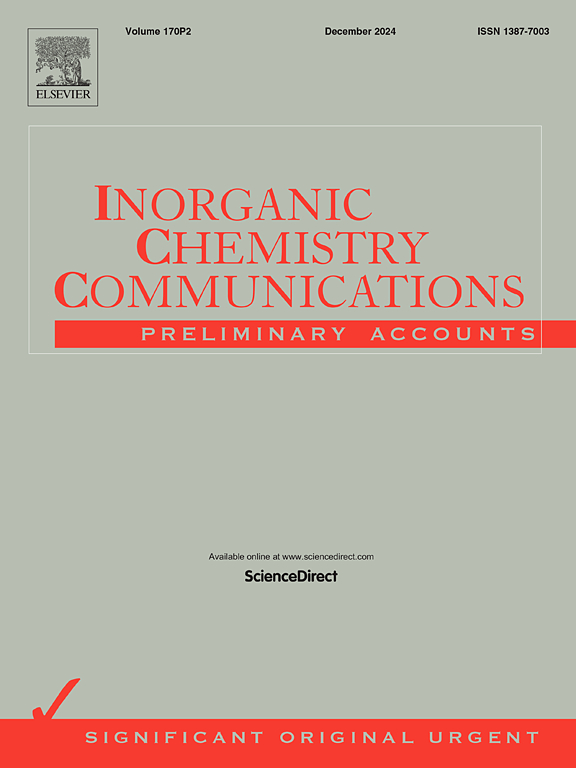Enhanced photoelectrocatalytic degradation of tetracycline by g-C3N4-TiO2/Ti3C2 Mxene composite modified TiO2 nanostructures photoelectrode
IF 4.4
3区 化学
Q1 CHEMISTRY, INORGANIC & NUCLEAR
引用次数: 0
Abstract
Herein, TiO2 nanograsses on nanotubes array (TGTA) electrode was modified by g-C3N4-TiO2/Ti3C2 composite and TGTA/g-C3N4-TiO2/Ti3C2 photoelectrode was investigated in the photoelectrocatalytic degradation of tetracycline. g-C3N4-TiO2/Ti3C2 composite displayed better visible light absorption and charge separation compared to the g-C3N4. Based on these properties, the TGTA/g-C3N4-TiO2/Ti3C2 photoelectrode indicated significantly the highest light absorption, resulting degradation efficiency of 76.14 % within 105 min. Rate constant of the TGTA/g-C3N4-TiO2/Ti3C2 was evaluated at about 13.64 × 10−3 min−1, which is approximately 7 and 3 times greater than that of the TGTA and TGTA/g-C3N4 photoelectrodes, respectively. Moreover, optimal applied potential of 1.5 V and the tetracycline concentration of 10 mg/L were determined for the TGTA/g-C3N4-TiO2/Ti3C2 photoelectrode with significant stability after 5 cycles. According to the results, the g-C3N4-TiO2/Ti3C2 composite on the TGTA electrode enhanced the light absorption, charge separation and transfer, introducing a promising photoelectrode for photoelectrocatalytic degradation of tetracycline.
g-C3N4-TiO2/Ti3C2 Mxene复合材料修饰TiO2纳米结构光电极增强四环素的光电催化降解
本文采用g-C3N4-TiO2/Ti3C2复合材料修饰纳米管阵列(TGTA)电极上的TiO2纳米草,研究了TGTA/g-C3N4-TiO2/Ti3C2光电极在光电催化降解四环素中的作用。与g-C3N4相比,g-C3N4- tio2 /Ti3C2复合材料具有更好的可见光吸收和电荷分离性能。基于这些性质,TGTA/g-C3N4- tio2 /Ti3C2光电极具有最高的光吸收,在105 min内降解效率为76.14%。TGTA/g-C3N4- tio2 /Ti3C2的速率常数约为13.64 × 10−3 min−1,分别是TGTA和TGTA/g-C3N4光电极的7倍和3倍。此外,TGTA/g-C3N4-TiO2/Ti3C2光电极的最佳电位为1.5 V,四环素浓度为10 mg/L,循环5次后稳定性显著。结果表明,TGTA电极上的g-C3N4-TiO2/Ti3C2复合材料增强了光吸收、电荷分离和转移,为四环素的光电催化降解提供了一种很有前景的光电极。
本文章由计算机程序翻译,如有差异,请以英文原文为准。
求助全文
约1分钟内获得全文
求助全文
来源期刊

Inorganic Chemistry Communications
化学-无机化学与核化学
CiteScore
5.50
自引率
7.90%
发文量
1013
审稿时长
53 days
期刊介绍:
Launched in January 1998, Inorganic Chemistry Communications is an international journal dedicated to the rapid publication of short communications in the major areas of inorganic, organometallic and supramolecular chemistry. Topics include synthetic and reaction chemistry, kinetics and mechanisms of reactions, bioinorganic chemistry, photochemistry and the use of metal and organometallic compounds in stoichiometric and catalytic synthesis or organic compounds.
 求助内容:
求助内容: 应助结果提醒方式:
应助结果提醒方式:


